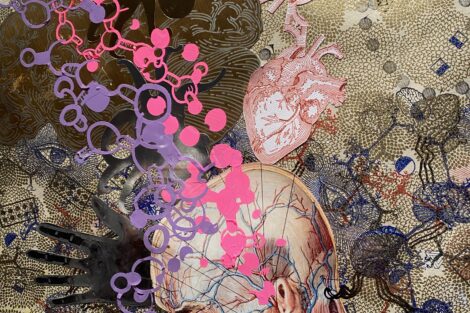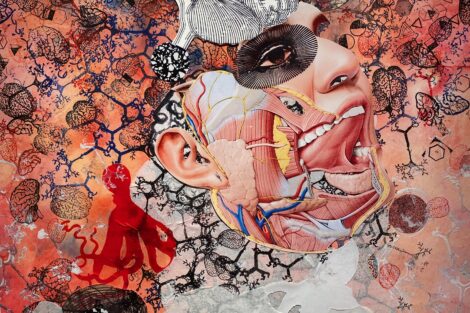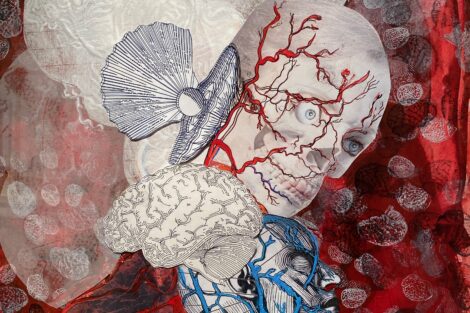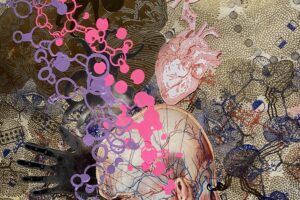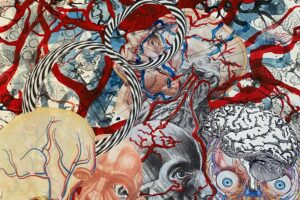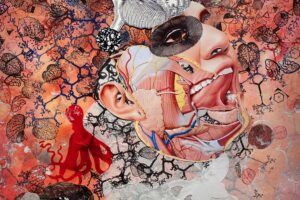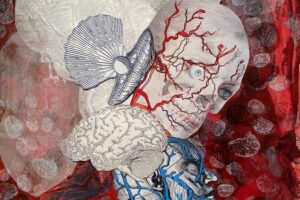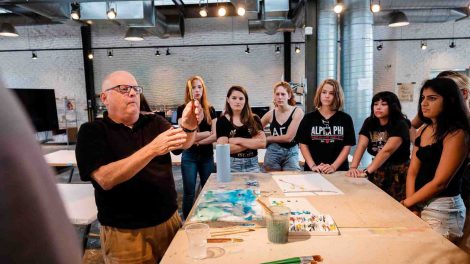Three studio art faculty describe how COVID has impacted their work, processes, and lives
By Stephen Wilson
Ed Kerns says it clearly: “Art reacts to crisis.”
The Eugene H. Clapp II ’36 Professor of Art then provides a litany of moments in history and accompanying images.
He starts with the painting The Triumph of Death by Pieter Bruegel from 1562 that relates to the bubonic plague.
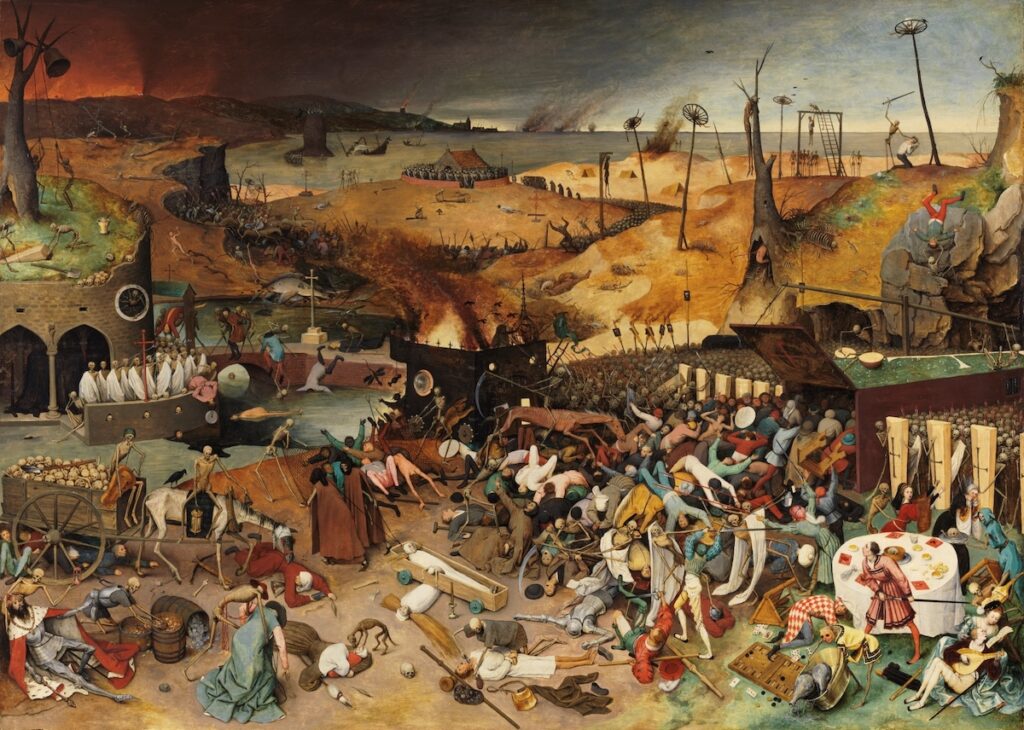
Next is a self-portrait by Edward Munch with the flu in 1918.

Keith Haring during the AIDS crisis.
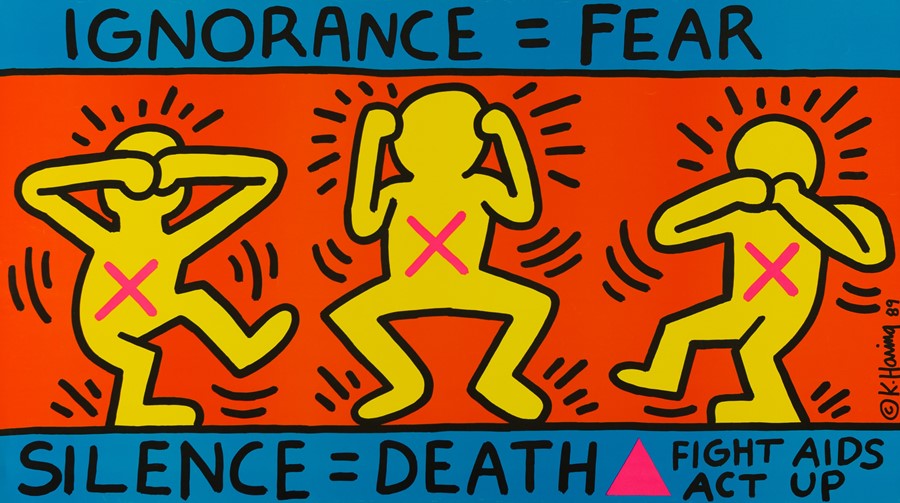
Whether processing the crisis, depicting its realities, or educating the public, artists have used their talents in response to global illness and disease.
So how have Lafayette faculty been impacted by COVID-19 and social isolation? Has it impacted their work, processes, mood, and motivations? Here are three artists who discuss the work and processes that have arisen from the pandemic.
Pedro Barbeito
Assistant professor of art and director of Lafayette’s Experimental Printmaking Institute (EPI)
COVID-19 has impacted artists and galleries in many ways. As I follow their fates through social media, I have been amazed at the range of outcomes. From what I’ve seen, embracing the moment and its limitations has been the way to move forward.
In regards to my work, this past pandemic year, though limiting my access to my studio (I’ve been going when no one else is there), has been incredibly fruitful artistically. The, if you will, solitary confinement has allowed me to attain a singular focus on what I’m making, establishing a deep connection to process and content, that I haven’t had in almost two decades with my work.
This isolation has not only presented itself in my studio work but also in my engagement with the art world. I haven’t visited galleries in NYC in a year, socialized with artists to converse about art, or contacted galleries and curators regarding exhibitions of my work.
All this has lifted the pressures of engaging in the art world, consciously and subconsciously, and permitted me to do exactly what I want with my work, following my curiosity and letting the process dictate the outcome. This has been incredibly therapeutic for me, making the visits to my studio cherished and longed for every day. I’ve taken chances, veering away from making things that look like my work and have allowed myself to investigate new possibilities. A painting language in my work is now subtly referenced while I’ve focused the onus of the work on the sculptural, allowing it to get big and messy. (By messy, I mean not having a clue what I’m doing at times.)
The irony of all this is that a month ago I posted an image of a new work on Instagram and now find myself in a group show this coming June in a prestigious NYC gallery.
I believe that during a time of turmoil art can function in many ways—it can address the politics of the moment by focusing an audience on the issues, but it can also be hopeful, allowing for our minds to briefly escape to a place of contemplative comfort, providing hope, and presenting the positive side of human enterprise. Instead of engaging overt political content in my work, I decided on cleanly dividing the two, allowing my studio work to psychically support me, while doing what I could with my skill sets to assist the community. Using my 3D printers, I spent part of April and May printing PPE parts for hospitals nationally.
Jim Toia
Director of community-based teaching at Lafayette and chair of Karl Stirner Arts Trail
My Joshua Tree experience is deeply connected to COVID-19 timing-wise as more people spent time outdoors in nature. The uptick in traffic to environments that have more fragile ecosystems has added to their stress. The pandemic has not altered the content of that project as much as exemplified how important art and education can be in preventing future harm to this vulnerable landscape. I was fortunate to spend more time focusing on the art-making process in a pristine and isolated location. And my walks through the desert certainly informed my studio activity.
However, the loss of some close friends to COVID prompted me to drive back across the country in early April. That was an exceptionally strange and otherworldly experience. Traveling through deserted landscapes, masking/gloving up at rest stops, finding places to stay with/near friends and having to remain at a distance was an alien experience.
Ed Kerns
If art reacts to crisis, then I am doing just that, addressing the emotional toll of all of this in a manner that is internal, expressive, and captures the anxiety of the experience. I think it can be seen in these new works.
Many are based on conversations with my brother, a front-line physician, who has been dealing with COVID since the beginning of the pandemic. His exhaustion, frustration, and humanity he described presented ideas for collages. The imagery in the work below represents a combination of internal agony of individuals not being able to get air into their lungs, the realities of transmission, and the isolation at death.



